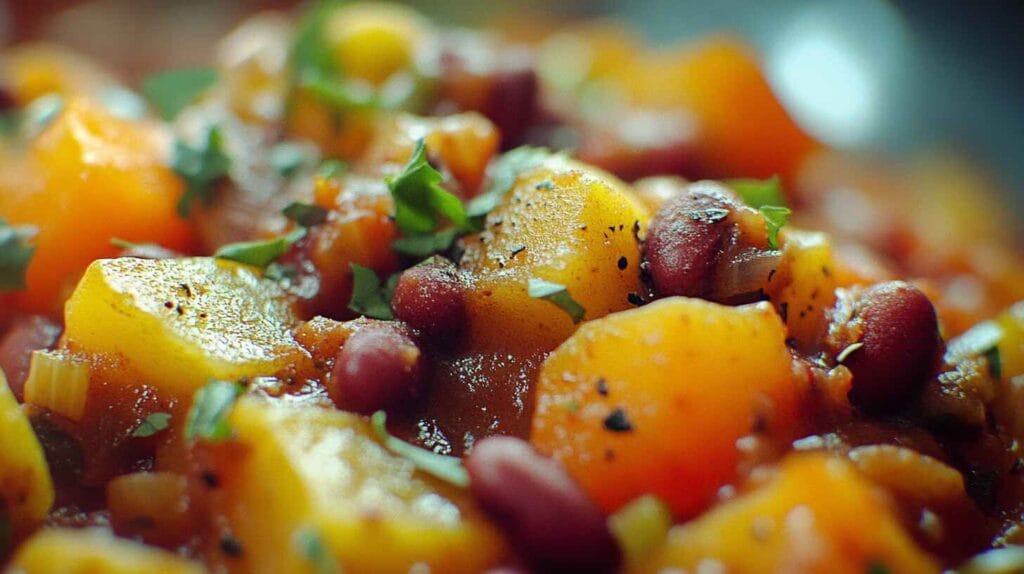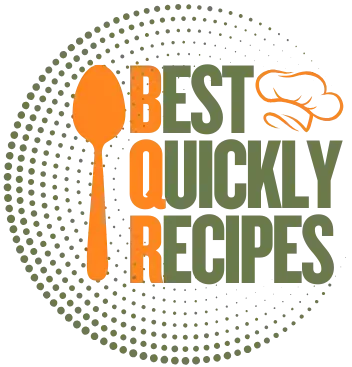Table of Contents
Understanding Squash
Types of Squash
Squash varieties include:
- Butternut Squash: Great for soups and roasting.
- Spaghetti Squash: A low-carb alternative to pasta.
- Acorn Squash: Ideal for stuffing or baking.
- Zucchini: Perfect for salads, sautés, and spiralizing.
For tips on using specific squash in recipes, check out this guide on Butternut Squash Chili in 7 Steps.
Nutritional Benefits
Squash is low in calories and high in fiber, supporting digestion. It’s also a source of carotenoids, which promote eye health and reduce inflammation.
The Nutritional Power of Kidney Beans
Health Benefits
- High in protein, making them an excellent meat substitute.
- Contain fiber, which supports heart health and digestion.
- Packed with antioxidants and essential minerals like potassium and magnesium.
Kidney beans are a fantastic source of protein, fiber, and essential minerals. If you’re curious about their cultural significance or how to prepare them uniquely, explore the article on What is the Significance of the Bean Pie?
Preparation Tips
If using dry kidney beans, soak them overnight and cook thoroughly to remove toxins. For canned beans, rinse well to reduce sodium content.
Simple Squash and Kidney Bean Salad
Ingredients:
- 1 cup cooked kidney beans
- 2 cups diced zucchini or yellow squash
- 1/4 cup chopped red onion
- 1/2 cup cherry tomatoes, halved
- 2 tbsp olive oil
- 1 tbsp lemon juice
- Salt and pepper to taste
Instructions:
- Combine kidney beans, squash, onion, and tomatoes in a large bowl.
- Whisk olive oil, lemon juice, salt, and pepper in a separate bowl.
- Drizzle dressing over the salad, toss, and serve chilled.
Combine zucchini, kidney beans, and a tangy dressing for a light, quick dish. Enhance your skills with insights from Exploring the World of Vegetarian Pasta Recipes.
Hearty Squash and Kidney Bean Soup
Ingredients:
- 1 cup cooked kidney beans
- 2 cups cubed butternut squash
- 1 small onion, diced
- 2 cloves garlic, minced
- 4 cups vegetable broth
- 1 tsp thyme
- Salt and pepper to taste
Cooking Method:
- Sauté onion and garlic in olive oil until fragrant.
- Add squash, beans, and broth.
- Season with thyme, salt, and pepper.
- Simmer for 20 minutes until squash is tender. Blend for a creamy texture if desired.
Spicy Squash and Kidney Bean Chili
Ingredients:
- 1 cup kidney beans
- 2 cups diced acorn squash
- 1 can crushed tomatoes
- 1 small onion, chopped
- 2 cloves garlic, minced
- 1 tsp chili powder
- 1/2 tsp cumin
- Salt and pepper to taste
Instructions:
- Sauté onion and garlic in olive oil.
- Add squash, tomatoes, beans, and spices.
- Simmer for 30 minutes until flavors meld. Adjust spice level as needed.
A warm bowl of chili featuring squash and kidney beans is a comforting choice for any season. Follow the simple guide in the article on Mastering Easy Dinner Recipes.

Baked Squash and Kidney Bean Casserole
Ingredients:
- 2 cups cooked kidney beans
- 3 cups sliced zucchini
- 1 cup marinara sauce
- 1/2 cup shredded mozzarella cheese (optional)
- 1/4 cup breadcrumbs
- 1 tsp oregano
Instructions:
- Layer beans, zucchini, and marinara in a baking dish.
- Top with cheese and breadcrumbs.
- Bake at 375°F (190°C) for 20 minutes.
Tips for Perfect Squash and Kidney Bean Dishes
- Selecting Ingredients
- Squash: Choose squash that feels heavy for its size, with smooth, unblemished skin. Avoid squash with soft spots, cuts, or cracks, as these may indicate spoilage. For summer squash (like zucchini), opt for smaller sizes, as they tend to be more tender and flavorful. For winter squash (like butternut or acorn), ensure the stem is intact and dry, which helps preserve freshness.
- Kidney Beans: Whether you use dry or canned beans, ensure they have a vibrant, deep red color. For dry beans, avoid packages with broken or shriveled beans. For canned beans, check the expiration date and select cans with no dents or bulges.
- Storing
- Squash: Store winter squash in a cool, dry, and well-ventilated place, such as a pantry or countertop. They can last for weeks, even months, under proper conditions. Summer squash is more delicate and should be stored in the refrigerator, ideally in a perforated bag to prevent excess moisture.
- Kidney Beans: Keep dry beans in an airtight container, stored in a cool, dark place to maintain their quality for up to a year. If using canned beans, store unopened cans in a pantry. Once opened, transfer any leftovers to a sealed container and refrigerate them for up to 3 days.
- Enhancing Flavors
- Herbs and Spices: Fresh herbs like parsley, cilantro, thyme, or rosemary can elevate the taste of squash and kidney bean dishes. Spices such as cumin, coriander, paprika, or curry powder add depth and complexity.
- Citrus Zest: Grated lemon, lime, or orange zest can brighten flavors, particularly in salads or roasted dishes. Add zest sparingly to avoid overpowering the dish.
- Aromatic Ingredients: Sauté garlic, onion, or ginger at the start of cooking to build a flavorful base.
- Fat for Richness: A drizzle of olive oil, coconut milk, or a knob of butter can add richness and enhance the natural sweetness of squash while complementing the heartiness of kidney beans.
- Layering Flavors: Taste and season your dish in layers as it cooks. Add salt and spices gradually, and adjust based on the desired flavor profile.
By selecting high-quality ingredients, storing them properly, and incorporating natural flavor enhancers, you can create truly delicious and memorable squash and kidney bean dishes every time.
Pairing Squash and Kidney Beans with Other Foods
- Combine with Quinoa or Brown Rice for Complete Protein
Quinoa and brown rice are excellent pairings with squash and kidney beans to create a balanced, protein-rich meal. While kidney beans provide essential amino acids, they lack methionine, which quinoa and brown rice supply. Combining these ingredients ensures a complete protein source, ideal for vegetarians and vegans. Add steamed or roasted squash and kidney beans to a bowl of quinoa or brown rice, and top with herbs, spices, or a tangy dressing for a wholesome, satisfying dish. - Serve as a Side Dish with Roasted Chicken or Tofu
Squash and kidney bean dishes can complement protein-rich main courses. For a hearty and nutritious meal:- Pair roasted or baked squash and kidney beans with herb-seasoned roasted chicken, which adds a savory contrast to the natural sweetness of the squash.
- For a plant-based option, serve alongside marinated and grilled tofu. Use soy sauce, ginger, and garlic in the tofu marinade to create a flavorful combination that pairs beautifully with the mild earthiness of the beans and the sweetness of the squash.
- Incorporate into Wraps and Bowls
- Use squash and kidney beans as a filling for tacos or wraps with avocado, shredded lettuce, and a dollop of salsa or yogurt for added creaminess.
- Add to grain bowls with toppings like roasted vegetables, nuts, and seeds for a nutrient-dense meal.
- Pair with Leafy Greens and Citrus
Create a well-rounded meal by combining squash and kidney beans with leafy greens like spinach, kale, or arugula. The greens provide extra vitamins and minerals, while a drizzle of citrus-based dressing, such as lemon or orange vinaigrette, enhances the overall flavor. - Blend into Stews and Curries
Include squash and kidney beans in stews or curries with lentils, coconut milk, and spices like turmeric and cumin. This combination offers a rich and warming meal, perfect for colder months.
By pairing squash and kidney beans with other nutrient-dense foods, you can enjoy a wide variety of balanced, flavorful, and nutritious meals.
Kidney Beans: Canned vs. Dry
Canned Kidney Beans:
- Convenient and ready to use.
- Higher in sodium; rinse before use.
Dry Kidney Beans:
- Cheaper and free from additives.
- Requires soaking and longer cooking time.
Squash Varieties to Try
- Delicata Squash: Sweet and creamy, great for roasting.
- Kabocha Squash: Dense and flavorful, perfect for curries.
- Pattypan Squash: Small and tender, ideal for grilling.
Dietary Considerations for Squash and Kidney Bean Dishes
- Gluten-Free: Use gluten-free breadcrumbs or avoid them altogether.
- Vegan: Replace cheese with nutritional yeast.
- Low-Sodium: Use fresh beans and unsalted ingredients.
Seasonal Squash and Kidney Bean Recipes
- Fall: Butternut squash soup.
- Winter: Casseroles with hearty squash.
- Spring: Zucchini salads.
- Summer: Grilled squash and bean skewers.
Kids and Squash: Making Kid-Friendly Dishes
- Create colorful dishes with vibrant ingredients.
- Opt for mild flavors and fun shapes, like spiralized squash.
Conclusion
Squash and kidney beans are a versatile and nutritious pairing that can be incorporated into countless recipes. Whether you’re preparing a salad, soup, or casserole, these ingredients are bound to enhance your meals and contribute to a healthier diet.
FAQs
- Are kidney beans good for you or bad for you?
Kidney beans are incredibly good for you when prepared and cooked properly. They are rich in protein, dietary fiber, iron, and essential nutrients, which promote heart health, regulate blood sugar levels, and support digestive health. However, raw or undercooked kidney beans contain a toxin called phytohemagglutinin, which can cause gastrointestinal distress. Proper cooking eliminates this toxin, making kidney beans a safe and healthy choice. - How do you remove toxins from kidney beans?
To remove toxins from kidney beans, you must cook them thoroughly. For dry kidney beans:- Soak them in water for at least 8–12 hours (overnight).
- Drain and rinse the beans.
- Boil the beans in fresh water for at least 10 minutes at a rapid boil.
- Simmer them for 45–60 minutes until they are tender.
This process neutralizes phytohemagglutinin and ensures the beans are safe to eat.
- Do kidney beans need to be soaked before cooking?
Yes, soaking dry kidney beans before cooking is highly recommended. Soaking reduces cooking time, improves texture, and helps to remove some of the indigestible sugars that can cause bloating or gas.- Quick soak method: Boil the beans in water for 2–3 minutes, remove from heat, and let them sit for 1 hour before draining and cooking.
If using canned kidney beans, soaking is unnecessary; just rinse them to remove excess sodium.
- Quick soak method: Boil the beans in water for 2–3 minutes, remove from heat, and let them sit for 1 hour before draining and cooking.
- What makes kidney beans taste better?
To enhance the flavor of kidney beans:- Seasonings: Use garlic, onion, bay leaves, or herbs like thyme and oregano during cooking.
- Broth: Cook the beans in vegetable or chicken broth instead of plain water.
- Spices: Add chili powder, cumin, paprika, or smoked paprika for a bolder flavor.
- Acidic elements: Add a splash of lemon juice, vinegar, or diced tomatoes toward the end of cooking for a bright, tangy note.
- Fat: Stir in a bit of olive oil, butter, or coconut milk for richness.

